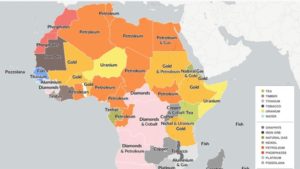
April 7, 2018//-Volatility is back in global financial markets. In early February, Denver-based hedge fund Ibex Investors, with just $350m assets under management, made $17.5m on a $200,000 VIX wager – an 8,600% return.
How come? It bought insurance to protect it when markets go haywire. It was a far-fetched scenario at the time, but they eventually did, on 5 February. In early February, data showing high wage growth raised expectations that the American Federal Reserve would hike interest rates sooner than expected. Bond yields shot up consequently. Equity markets took a hit, as the cheap debt hitherto fueling their rally was about to start getting dear.
Higher inflation expectations were confirmed almost two weeks later, when US inflation data for January came out at 2.1%, 20 basis points above the consensus estimate of 1.9%. A week later, hawkish Fed minutes confirmed the fears of market participants.
Prior to the release of the minutes, the Fed had led markets to believe there would probably be about three rate hikes in 2018. Afterwards, some economists began to suggest there could be as many as five. This is probably extreme. But such varying views, fears and sharp market reactions are evidence of what has been missing from the markets since global central banks starting flooding them with easy money in the aftermath of the 2007–08 global financial crisis – volatility.
Unprepared
In tandem with the Fed, the Bank of England (BoE) is similarly on a tightening cycle. And the European Central Bank has already signalled monetary contraction could come as early as 2019. The Bank of Japan has also started to reduce its asset purchases.
Does that mean the end of easy money, though? Not really. At 1.5%, US money is still relatively cheap. And even in the UK, where consumer inflation (3% in January) is already above the much sought after 2% target of other global central banks, the BoE rate is just 0.5%. Emerging markets (EMs), which have been huge beneficiaries of quantitative easing (QE), need to start preparing for a post-QE world, however. This is because as interest rates start to rise in advanced economies, as they already have, there is going to be an increasing opportunity cost to allocating capital to EMs.
Still-attractive EM yields will continue to make the carry-trade too tempting to ignore, but the party will not last forever. At some point, there will be a sharp market correction, as yields rise in response to tighter global monetary policy. When that time comes, emerging and frontier markets, particularly African ones, not already prepared might suffer damaging shocks.
Andrew Alli, president and chief executive of Lagos-based Africa Finance Corporation (AFC) highlights why African markets might be at risk: “Many African countries have run down their reserves and/or borrowed significantly since the financial crisis and, as such, don’t have as much ‘fiscal space’ as they did prior to the last financial crisis. Also their macro positions – deficits/inflation, etc – have worsened.”
Wale Okunrinboye, fixed income and currency specialist at Ecobank, the pan-African bank, corroborates his view: “Reserve levels across most countries have declined markedly as fiscal and current account pressures increased reserve drawdowns across most oil exporters whose economies went into recession… Sub-Saharan African [SSA] economies at the present appear lightly equipped to deal with [another] global financial crisis.”
This was not always the case. “In the run-up to the [2008–09] global financial crisis, helped by [the] commodity price rally, [ample] FX reserve levels… alongside relatively low debt levels and high economic growth rates, helped [African] countries deploy countercyclical measures to temper spillover shocks,” he adds.
Some African countries have been taking precautions, though. For instance, Kenya sought and secured a two-year $1.5bn standby credit facility from the International Monetary Fund (IMF) in March 2016. It has not had cause to use it, even though the prolonged presidential elections last year could have triggered a need to do so.
However, there were revelations in February that the buffer had not actually been available to the Kenyan authorities since June 2017. The IMF provided clarification to Reuters on why it stopped the authorities’ access: “The programme has not been discontinued but access was lost in mid-June because a review had not been completed”, said Jan Mikkelsen, the IMF representative for Kenya.
For such arrangements to achieve their confidence-boosting utility transparency is required. Market participants might not consider such arrangements to be entirely iron-clad in the future.
Narrow leg room
As commodity prices have been rising, can squandered foreign exchange reserves be restored before any potential crisis?
Okunrinboye gives a comprehensive explanation: “Though [commodity] prices have rebounded, they remain at discounts to levels seen during the commodity supercycle.” So wide current account deficits continue to be the case.
“Furthermore,” he says, “capital pressures lurk on the horizon, as a search for yield [which] drove heightened portfolio inflows to SSA capital markets [caused] significant asset price inflation.”
Thus, rapid exits of hot money in the event of another global financial crisis are likely to fuel exchange rate pressures.
And, following an expansion in debt levels by African economies due to QE, “fiscal leg room appears narrow relative to the last global financial crisis; even as elevated inflation has forced many of these economies into hawkish positions with little choice but to tighten in the event of sudden currency pressures.”
“So,” he says, “even as a host of SSA economies are now entering into structural reform programmes with the IMF, the overall sense is that they seem lightly prepared for another event of a similar scale.”
Even so, it is not entirely improbable that they could come out again largely unscathed. According to AFC’s Alli, at less than 3%, “Africa’s general lack of exposure to global trade flows” is one reason why.
By Rafiq Raji
This article originally published on africanbusinessmagazine.com.


